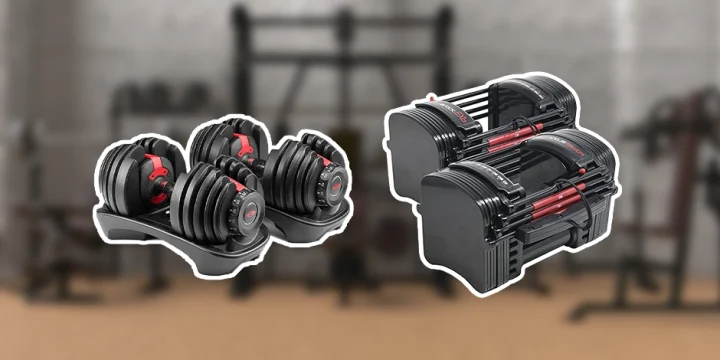As a fitness trainer, I’m aware that many gymgoers lift weights every day. But they could be making a grave mistake.
Daily lifting won’t necessarily help them build muscle mass. In fact, it might have the opposite effect.
While I know this from my own experience, I also wanted to check what science says about lifting weights every day. Here are my findings, based on dozens of hours of research.
Quick Summary
- You can lift weights every day, and it has benefits like getting bigger muscles, attaining stronger bones, and accelerating the metabolism for weight loss.
- The U.S. Department of Health and Human Services recommends strength training at least twice a week for general health.
- The American Council on Exercise (ACE) states that post-workout, your body's increased oxygen consumption leads to burning approximately 5 calories per liter of oxygen used.
- In my view, while daily weightlifting has its benefits, balancing it with adequate rest and recovery is crucial for long-term fitness success.
Lifting Weights Every Day: Pros

Everyday weightlifting has many pros, but I’ll focus only on the three most important ones below.
Bigger And Stronger Muscles
While other types of workouts can help you build your lean muscle mass, weight training is the most efficient. That’s because it quickly causes microtears on your muscles, which are necessary for muscle development.
Daily training with heavy weights should cause micro-tears even faster. So, your muscles will become stronger.
That might mean that you’ll build them more quickly, too, but not necessarily. As we’ll see below, some studies indicate otherwise.
Stronger Bones
According to Wolff’s Law, bones naturally adapt to the stress under which they’re placed [1].
So, if you increase the load you’re lifting, you force your bones to reconstruct themselves so that they can handle more stress. They’ll become stronger and have more endurance.
Since lifting weights every day is bound to put extra pressure on your bones, bone density should naturally improve.
Accelerated Metabolism And Weight Loss

As a personal trainer, I always tell my runner clients that strength training is key. It ramps up your metabolism and aids in shedding pounds. Here's why: daily weightlifting intensifies this.
According to the American Council on Exercise (ACE), after a workout, your body consumes more oxygen, which means burning more calories. You're looking at about 5 calories for every liter of O2 [2].
The bottom line? The more you lift, the more calories you burn. Stick with it every day, and you'll quickly notice a drop in weight and a more toned physique. Trust me, it works wonders.
Post you may like: Does Lifting Weights Make Your Voice Deeper?
Lifting Weights Every Day: Cons

Lifting weights daily has many cons, too. Again, I’ll outline only the three most important ones here.
Slower Muscle Development
When you lift weights every day, your muscles don’t have enough time to recover.
“In the scenario where the muscle does not have time to recover, a catabolic process occurs where the muscles degrade and continually break down. This process is referred to as ‘overtraining.’”
- Austin Martinez, MS, CSCS, ATC, Director of Education for StretchLab
When you overtrain a muscle, your cortisol levels increase. And cortisol, the body’s stress hormone, inhibits protein synthesis and sabotages muscle development. A great way to lower its levels is with the help of natural supplements that reduce cortisol levels.
What’s more, your body doesn’t have enough time to repair damaged muscle fibers if you lift weights every day. As a result, the muscle fibers won’t increase in thickness or number.
Again, this means that your muscles won’t grow. Well, at least not as fast as they could.
Increased Risk Of Injury

According to the National Institute of Health (NIH), lifting weights every day can cause muscle overuse injuries and muscle imbalances, especially if you’re constantly training the same muscle group [3].
A better alternative would be training different muscle groups each day.
That way, you’ll still train some muscles while letting the others rest and recuperate.
Muscle Soreness
Lastly, daily strength training may lead to constant muscle soreness — and you might not even be aware of it.
That’s because delayed onset muscle soreness, or DOMS, occurs 24 to 72 hours after training. And muscle soreness can decrease the quality of your workout, lower your motivation, and further increase the risk of injury.
How Often Should You Lift Weights?

The U.S. Department of Health and Human Services recommends strength training at least twice a week [4]. But that’s a minimum recommendation that you probably want to surpass. So, let me give you my advice as a personal trainer.
You can lift weights every day, but your body needs rest in between workouts. That’s why you should have at least one rest day per week.
That way, you’ll be able to reap the benefits of frequent strength training while giving your muscles adequate recovery time.
Tips:
But you can also determine how often you should lift weights based on your fitness goals. First, establish how often you need to rest to achieve your desired outcome:
- If you’re training for muscular endurance, rest for at least 24 hours between workouts.
- If you’re training for hypertrophy (growth), rest between 24 and 72 hours between workouts.
- If you’re training for strength and power, rest between 48 and 72 hours between workouts.
Next, plan your weekly workout routine according to these recommendations. For example, if you’re training for endurance, you could lift four days a week and still have 24-hour rest periods in between workouts.
Of course, you don’t have to follow these recommendations to a T. If you want to lift more often, you can. In that case, just make sure you adopt a split workout routine.
Also Read: 2-day Split Workout Routine
How To Stay Safe While Lifting

Whether or not you’ll lift every day is up to you. Either way, you need to ensure you’re staying safe while lifting. Here are a few fitness tips that will help you do so:
- Pay attention to the technique. If you have improper form while exercising, you risk injury. For example, you could injure your back while doing a bench press if you don’t keep it slightly bent.
- Don’t (always) power through soreness. Feeling a little sore after a tough workout is normal. However, extreme soreness indicates that you haven’t given yourself enough recovery time. So, instead of powering through soreness in the weight room, take a day or two to rest and recuperate.
- Add weight progressively. If you’re lifting weights every day, make sure you’re constantly challenging your body with more weight. Lifting more weight every week or month can help prevent hitting plateaus.
- Alternate between different muscle groups. You should always train several muscle groups instead of just one. But this is even more important if you’re lifting weights daily. Alternations between muscle groups allow the muscles you’ve previously trained to recover. According to WebMed, you’ll also avoid symptoms of overtraining, like sleep disturbances, excessive fatigue, and nagging injuries [5].
- Do more reps. A higher number of reps can improve the aerobic capacity of your muscles. A high aerobic capacity, or VO2 max, will increase your muscles’ flexibility, speed up recovery, and help you shed pounds.
If you find yourself struggling to follow these tips — or just want a helping hand — consider hiring a certified trainer to help you reach your fitness goals faster.
Workout Splits For Maximum Results

As a personal trainer, I understand if you still want to lift weights every day.
Luckily, there’s a method that allows you to do so without experiencing the drawbacks of daily strength training.
The secret is working multiple muscle groups during the week instead of just one.
That way, you’ll train one muscle group while the other one’s recovering.
So, I suggest you practice the so-called workout splits that divide your workouts by major muscle groups or body parts. You’ll find two done-for-you split routines below, but you’re welcome to come up with a unique routine yourself.
Upper/Lower Workout Split
One way to prevent overtraining your muscles is to split your workouts between two major body regions:
- Upper body muscles: chest, middle and upper back, shoulders, biceps, triceps
- Lower body muscles: hamstrings, lower back, quads, glutes, calves, and core
Here’s what your weekly upper/lower body split routine could look like:
- Monday: Upper-body exercises
- Tuesday: Lower-body exercises
- Wednesday: Upper-body exercises
- Thursday: Lower-body exercises
- Friday: Upper-body exercises
- Saturday: Lower-body exercises
- Sunday: Rest
As you can see, this split routine includes only one rest day. You might need more, especially if your goal is to gradually increase the load you’re lifting.
Feel free to tailor this routine to your needs and wants.
Here’s how you could reorganize the above routine to rest more often:
- Monday: Upper-body exercises
- Tuesday: Rest
- Wednesday: Lower-body exercises
- Thursday: Rest
- Friday: Upper-body exercises
- Saturday: Rest
- Sunday: Lower-body exercises
Pushing/Pulling/Leg Workout Splits

Instead of splitting your workouts into two muscle groups, you can split them into three:
- Upper-body pushing muscles: chest, triceps, shoulders
- Upper-body pulling muscles: back, biceps, and rear delts
- Lower body muscles (“legs”): calves, quads, hamstrings
Here’s how you could organize your weekly workout routine based on this split:
- Monday: Pushing muscles
- Tuesday: Lower body muscles
- Wednesday: Pulling muscles
- Thursday: Lower body muscles
- Friday: Pushing muscles
- Saturday: Pulling muscles
- Sunday: Rest
More Is Not Necessarily Better — But Here’s What Is

So, we’ve learned that lifting every day won’t necessarily result in the fitness and health benefits you’re hoping for. More workouts don’t always yield better results.
So, instead of working out more, try working out smarter. Here’s how:
- Opt for shorter, higher-intensity workouts instead of going to the gym daily: To increase the intensity of your workout, lift heavier weights or, better yet, perform slow-motion strength training. Slow, controlled movements put more pressure on the muscles because you can’t rely on momentum to lift.
- Rest only after you’ve completed the entire workout: Little to no rest time in between exercises builds muscle faster.
- Avoid full-body workouts if you plan to lift every day: Dedicate each workout to only a single muscle group so that your other muscles can recover in the meantime.
Nutritional Requirements
Individuals engaging in daily weightlifting require a diet tailored to support muscle growth and recovery.
- Protein is crucial, with recommendations typically ranging from 1.6 to 2.2 grams per kilogram of body weight daily, to aid in muscle repair and growth.
- Hydration is equally important; adequate water intake prevents dehydration, which can impair muscle function and recovery.
- Micronutrients, including vitamins and minerals like iron, calcium, and B vitamins, play vital roles in energy production and muscle contraction.
- A balanced diet rich in lean proteins, whole grains, fruits, vegetables, and healthy fats, along with sufficient water, is essential for optimal performance and recovery in weightlifting.
FAQs
How Long Should I Lift Weights Every Day?
You should lift weights for up to an hour every day if you’re lifting a heavy enough weight. That’s enough to trigger muscle development while lifting for longer could lead to injuries.
How Soon Will I See Results from Lifting Weights?
You will see results from lifting weights after three to four weeks if you follow a carefully crafted workout routine and stay disciplined with your diet.
What Happens if You Only Lift Weights and No Cardio?
Focusing solely on weightlifting without cardio can lead to increased muscle mass and strength, but may result in limited cardiovascular fitness, potential weight gain due to insufficient calorie burn, and reduced overall endurance and heart health.
Does Lifting Burn More Fat Than Cardio?
Yes, lifting can burn more fat than cardio by increasing muscle mass, which boosts metabolism and fat burning, even at rest. However, cardio is effective for immediate calorie burn. A combination of both offers the best fat loss results.
References:
- https://www.icoi.org/glossary/wolffs-law/
- https://www.acefitness.org/resources/pros/expert-articles/5008/7-things-to-know-about-excess-post-exercise-oxygen-consumption-epoc/
- https://www.ncbi.nlm.nih.gov/pmc/articles/PMC9324710/
- https://health.gov/sites/default/files/2019-09/2015-2020_Dietary_Guidelines.pdf
- https://www.webmd.com/fitness-exercise/what-to-know-about-overtraining
About The Author
You May Also Like






